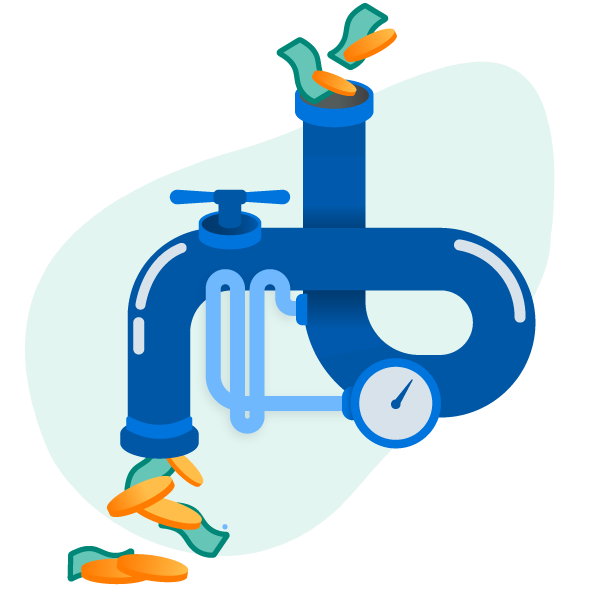In the dynamic world of restaurant and bar accounting management, one crucial aspect that demands constant attention is cash flow.
Cash flow refers to the movement of money in and out of a business, encompassing all the incoming revenue and outgoing expenses. It is the lifeblood of any restaurant or bar, ensuring the smooth operation and growth of the establishment.

Tracking cash flow is of utmost importance as it provides valuable insights into the financial health and stability of the business. By meticulously monitoring the inflow and outflow of funds, restaurant and bar owners can effectively manage their resources, make informed decisions, and mitigate potential financial risks.
Whether it's paying suppliers, managing salaries, or investing in new equipment, understanding and tracking cash flow is the foundation for sustainable success in the competitive hospitality industry.
Restaurant owners and/or managers can utilize the cash flow document for internal and external purposes.
Internally, you should review your cash flow statement as often as every week or every quarter (most experts recommend every month) to see a clearer picture of where cash is going and where it is coming from. A few questions to ask while auditing the report are:
Externally, banks can use the cash flow statement to decide on the creditworthiness of the business.
They may be looking to learn items like whether the restaurant makes enough cash to cover its current liabilities through the operations. Or, where exactly is the cash coming from? Having a clear document with these answers and explanations will help you look better in the eyes of the bank.
As a restaurant owner or manager, one of the key factors that can determine the success or failure of your establishment is how well you manage your cash flow. By effectively managing your cash flow, you can ensure that your restaurant stays profitable, while also keeping a close eye on where your money is coming from and where it is going. Here are three essential tips to help you stay on top of your restaurant's cash flow and maximize your profits:
1. Monitor and Track Daily Sales: The first step in effectively managing your cash flow is to closely monitor and track your daily sales. Implement a reliable point-of-sale (POS) system that allows you to accurately record each transaction and gather detailed sales data.
By analyzing your sales data regularly, you can identify trends, understand peak periods, and make informed decisions to optimize your menu offerings, pricing, and staffing levels. Additionally, tracking your sales allows you to promptly identify any discrepancies or irregularities, helping you prevent potential losses and maintain financial control.
2. Control Operating Costs: Another crucial aspect of managing cash flow in restaurants is controlling your operating costs. Regularly review your expenses, such as food and beverage costs, labor costs, rent, utilities, and supplies, to ensure they are in line with your revenue.
Look for opportunities to negotiate better deals with suppliers, optimize your inventory management, and streamline your operations to minimize waste and unnecessary expenses. By keeping a close eye on your operating costs, you can identify areas for improvement and make strategic decisions to increase your profit margins.
3. Implement Effective Cash Flow Forecasting: To stay ahead of your finances and plan for the future, it is essential to implement effective cash flow forecasting. This involves projecting your future cash inflows and outflows based on historical data, industry trends, and upcoming events or promotions.
By accurately forecasting your cash flow, you can anticipate any potential cash shortages and take proactive measures to mitigate them, such as securing additional funding or adjusting your spending. Cash flow forecasting also enables you to make informed decisions about investments, expansion plans, and financial strategies that align with your long-term goals.
By following these three tips, restaurant owners or managers can effectively manage their cash flow, maximize profits, and maintain financial control. With a solid grasp on where their money is coming from and where it is going, they can make informed decisions that lead to long-term success in the highly competitive restaurant industry.